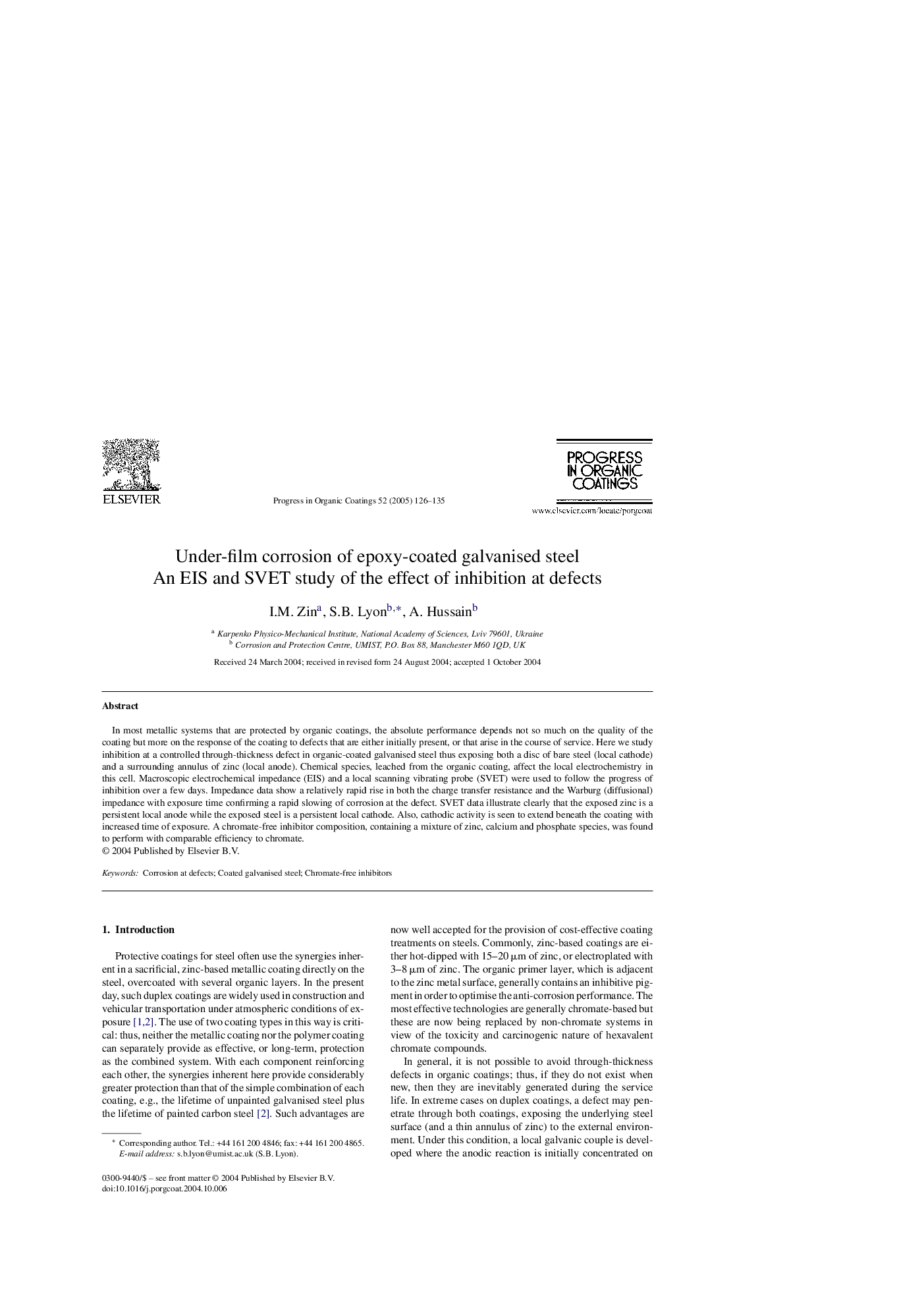| Article ID | Journal | Published Year | Pages | File Type |
|---|---|---|---|---|
| 10398039 | Progress in Organic Coatings | 2005 | 10 Pages |
Abstract
In most metallic systems that are protected by organic coatings, the absolute performance depends not so much on the quality of the coating but more on the response of the coating to defects that are either initially present, or that arise in the course of service. Here we study inhibition at a controlled through-thickness defect in organic-coated galvanised steel thus exposing both a disc of bare steel (local cathode) and a surrounding annulus of zinc (local anode). Chemical species, leached from the organic coating, affect the local electrochemistry in this cell. Macroscopic electrochemical impedance (EIS) and a local scanning vibrating probe (SVET) were used to follow the progress of inhibition over a few days. Impedance data show a relatively rapid rise in both the charge transfer resistance and the Warburg (diffusional) impedance with exposure time confirming a rapid slowing of corrosion at the defect. SVET data illustrate clearly that the exposed zinc is a persistent local anode while the exposed steel is a persistent local cathode. Also, cathodic activity is seen to extend beneath the coating with increased time of exposure. A chromate-free inhibitor composition, containing a mixture of zinc, calcium and phosphate species, was found to perform with comparable efficiency to chromate.
Related Topics
Physical Sciences and Engineering
Chemical Engineering
Process Chemistry and Technology
Authors
I.M. Zin, S.B. Lyon, A. Hussain,
